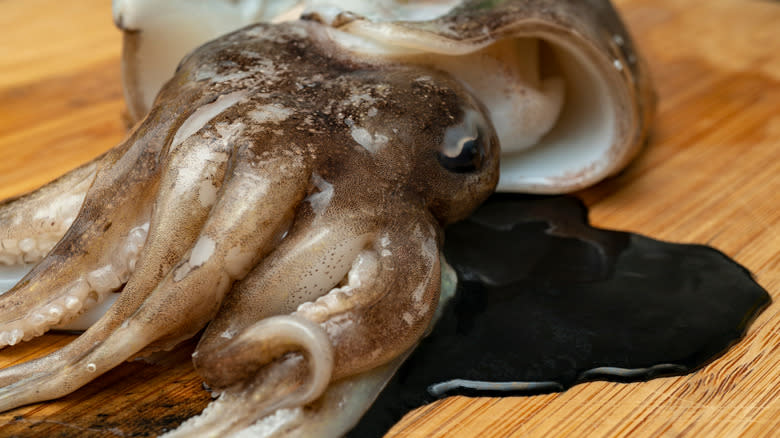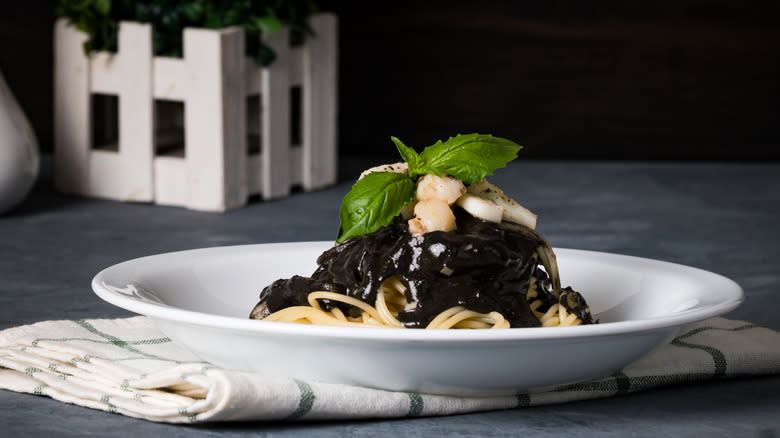Store-Bought Squid Ink Isn't Always The Real Deal

If you love eating seafood, chances are good that you've encountered a dish containing squid. Whether chargrilled whole or thrown in a stir fry, squid brings the briny flavor of the sea to your plate. Even those who are wary of seafood usually won't pass up a plate of fried calamari. But there is far more to a squid than just its delectable tentacles. Buried inside each squid is a sac filled with — you guessed it — ink.
Jet-black squid ink is more than a cartoonish getaway ploy for undersea mollusks. In fact, it's a prized culinary ingredient for several ocean-inspired dishes. It adds flavor to pasta sauces and can even elevate the color of a cocktail. You can find this unique ingredient on the shelves of your local grocery store. But before you run out to buy a jar of ink, know this: Most "squid" ink you'll find at the store doesn't actually come from a squid. Instead, it's taken from another ocean dweller — the cuttlefish.
Read more: 12 Underrated Types Of Fish You Should Try At Least Once
What Is Squid Ink?

Squids are a type of cephalopod, a class that also includes octopuses and cuttlefish. Just about all cephalopods produce ink. When threatened, these creatures eject the ink, which forms a thick cloud. Under the cloak of inky darkness, they're able to escape threats and ambush prey.
In the kitchen, ink is typically used to color dishes or add a bit of a briny flavor. In an interview with Livestrong, chef Jason Hall recommends using small amounts to prepare ingredients. "You can add a little squid ink to [flavor] the water you're using to cook pasta or rice," he says. Luckily, "squid ink is not fishy at all," he notes, so you can use it to safely add a bit of flavor without overwhelming a dish.
Beyond taste, squid ink adds several beneficial compounds to a meal. According to a paper published in the journal Marine Drugs, compounds found in squid ink have antimicrobial properties and have even shown anti-tumor effects that could be harnessed to fight cancer.
Most Squid Ink Is Actually From Cuttlefish

When you're ready to tackle a recipe that calls for squid ink, you'll find that most store-bought ink comes from cuttlefish, not squid. Also cephalopods, cuttlefish look similar to squids but lack their torpedo-shaped bodies. Like squids, these squishy mollusks are a common menu item and can be prepared using a variety of methods. Cuttlefish also emit a similar black ink that is often bottled and sold in place of squid ink.
So, why do stores typically sell cuttlefish ink instead of real squid ink? To most palates, cuttlefish ink is a bit milder than real squid ink, which can taste a bit harsh. In an interview with Delicious, "Fishtales" podcast host John Susman says that cuttlefish ink has "a much nuttier taste" than squid, which pairs well with many dishes. Luckily, cuttlefish ink is perfectly fine in any recipe that calls for squid ink. The two are interchangeable ingredients, and both can be used to spice up your next ocean-infused kitchen creation.
Read the original article on Daily Meal.

